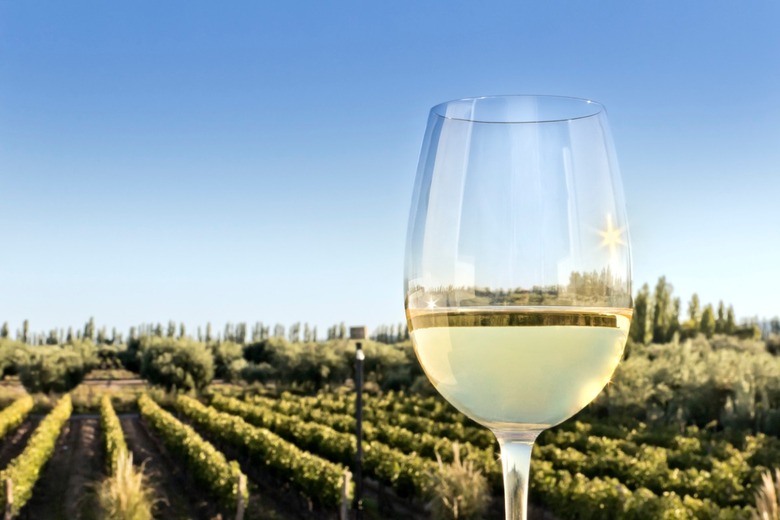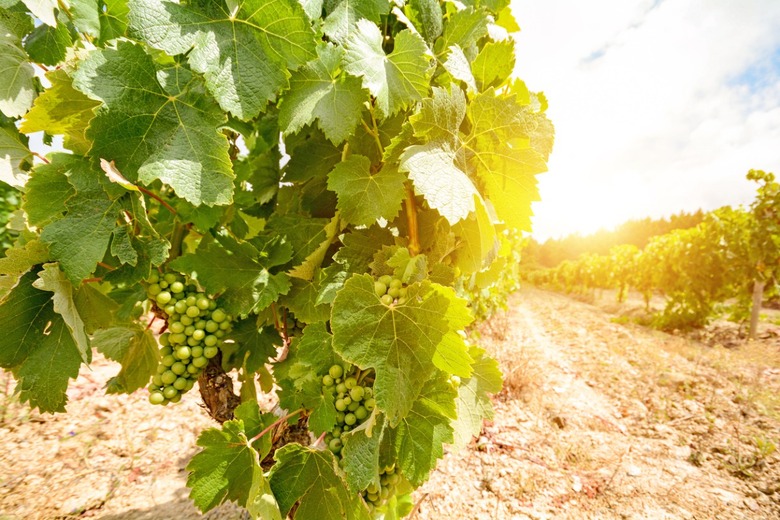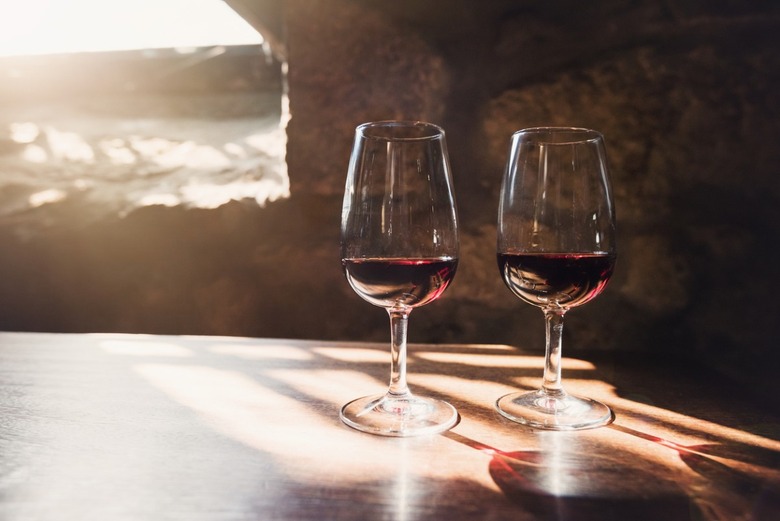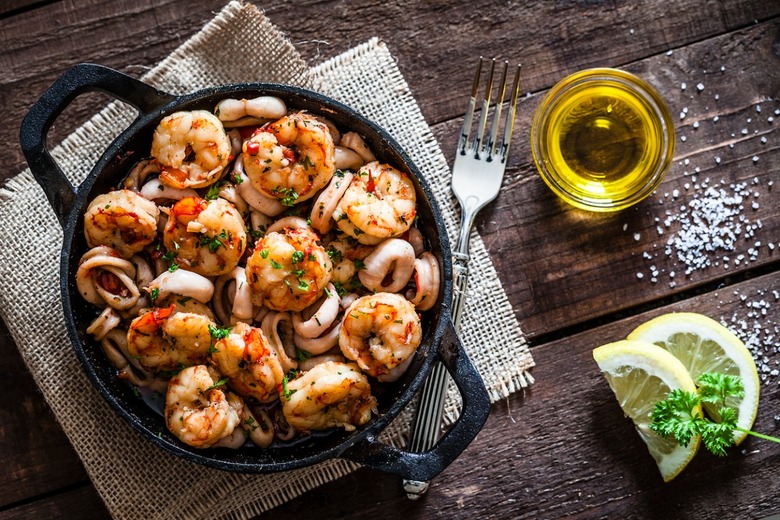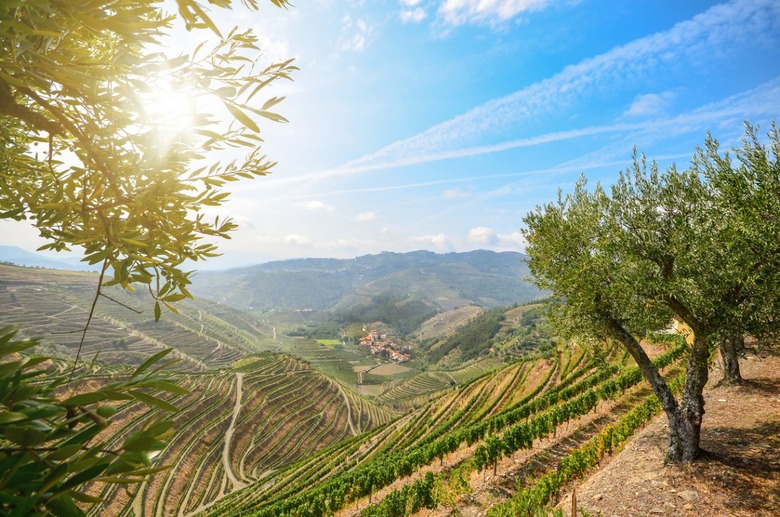8 Things You May Not Know About Vinho Verde (But Probably Should) Gallery
Wildly popular and modestly priced, Vinho Verde brings remarkable versatility and consistent affordability to the glass. An easy entry point to the world of fresh, crisp and sometimes spritzy white wines, Vinho Verde is an enthusiastic ambassador for the rugged and diverse winemaking region of northern Portugal. Home to whites, reds, rosés, sparkling wines, and even spirits, Vinho Verde showcases a broad spectrum of wines and styles that are well rooted in a storied tradition of centuries of winemaking while bringing technology and modern winemaking practices into the fold.
Vinho Verde Is a Place, Not a Grape
Vinho Verde not the name of a specific grape but rather the name of a place. The Vinho Verde DOC was designated in 1908 to establish origin standards for the wine type; it is Portugal's largest classified wine region by area. This gorgeous, emerald green cool-climate, high-precipitation place is tucked into the northwest corner of Portugal and beautifully bordered by the Atlantic to the west and Spain to the north. Its annual rainfall is quite high (almost 50 inches), but happily those rains tend to come during the winter and spring, fortifying the vines for growth and leaving harvest relatively warm and dry. Vinho Verde boasts over 51,000 acres under vine and allows 47 unique grape varieties to be classified under the Vinho Verde DOC. With over 19,000 growers in nine sub-regions and delivering wine to over 100 different export markets, Vinho Verde continues to claim the hearts of consumers around the globe for budget-friendly wines.
Pro tip: Vinho Verde is pronounced "veen-yo vaird" locally, dropping the "e" sound from the end of the second word.
“Verde” Is a Nod to the Color of the Landscape, Not the Wine
For years, I had been told that the name Vinho Verde (literally "green wine") is a nod to the wine's greenish tinge in the glass, or the fact that most bottles are best when consumed young and "green," however, according to the Vinho Verde wine commission (and if anyone should know, it's them) the name is actually a direct reference to the verdant regional landscape of the DOC.
Blends and Trends
The popular spritzy, crisp and refreshing Vinho Verde wines are a tasty blend of native white wine grapes: alvarinho (aka albariño in Spain), loureiro, arinto, avesso, and trajadura, among others. These grapes are harvested and handled at low-temperature fermentation and then typically bottled within three to six months of harvest. To infuse some subtle bubbles and a little lift to the final wine, a shot of carbon dioxide is often added on the bottling line. Expect bright acidity, forward fruit, and an underlying minerality to mark most of these wallet-friendly wines.
Fun, Fizzy Vinho Verde Isn’t the Whole Story
While the spritzy side of Vinho Verde steals the limelight and has made quite the impression on palates and wallets for easygoing wines, there is more (much more) to the story of Vinho Verde white wines. For instance, many producers are making excellent single-variety bottles that showcase the serious side of the region. Grapes that are often used in the traditional synergistic Vinho Verde blends are being appointed to shine solo and reflect the region's terroir through the lens of a single grape. Alvarinho, loureiro, trajadura, and avesso are all grapes that have gained ground in the single-variety and often single-estate offerings coming out of Vinho Verde. These wines skip the spritzy touch of carbon dioxide at bottling and may opt for a bit of oak and a touch of age (though there is plenty of experimentation region-wide in extended aging). Single variety producers to look for: A&D Wines (Monologo Series), Aphros Wines (avesso), Aveleda Alvarinho (100 percent alvarinho), Quinta de Santiago, Quinta de Santa Christina (100 percent batoca).
Vinho Verde Is Not Just a White Wine
While 85 percent of the region is producing white Vinho Verde, there is also red, rose and sparkling Vinho Verde — and it's delicious! In fact, the region makes lively, medium-bodied, deeply pigmented red wines mostly from the vinhão grape. The tricky piece is that finding red Vinho Verde outside of Portugal is pretty much impossible, making a visit to the beautiful region even more worthwhile (see below). The Vinho Verde rosé is a bit easier to find abroad and is made most often from the native grapes touriga nacional, vinhão, padeiro and espareido grapes. These are happy, refreshing rosés with a fruity nature and an affinity for poolside sipping and picnics.
Serious Sparkling Wine From Alvarinho
Subtle and spritzy may define the sparkling wine themes for most of Vinho Verde, but then there's the serious side of Vinho Verde's sparkling wine scene — made from the dynamic and aromatic alvarinho grape — crisp, complex, and completely capable of capturing a plate of oysters. These bottles of bubbly are made in the traditional method and show themselves to be every bit as viable and vibrant as a cool, clean cava from the Penedes region in eastern Spain.
Verde Is Made for Seafood
Forging perfect pairing partners is easy when you live right next to the Atlantic. Traditional codfish, assorted shellfish, octopus drizzled in olive oil, calamari, briny sardines, and sushi all highlight the versatile pairing potential of regional Vinho Verde. Yet, it's not just seafood that finds firm footing with these willing white wines. Grilled veggies, salads, seasonal appetizers, and fresh finger foods all enjoy the ripe fruit character, mouthwatering acidity, and lively character of Vinho Verde.
Vinho Verde Has a Tourist-Friendly Wine Route
It's true. Vinho Verde has created eight wine trail itineraries stretching from the vibrant, edgy coastal city of Porto to the meandering Minho River that separates Spain from northern Portugal. Visitors can discover the rich regional history, UNESCO World Heritage sites, and delicious local dishes while sipping their way through Vinho Verde's well-marked wine routes. If you're looking for an interesting wine route a little closer to home, check out the surprising hidden gems in some of these states that you may not have known made wine.
More From The Daily Meal:
20 Reasons Why You Should Drink a Glass of Wine Every Day
Wine Holidays: 18 (Sort of) Official Excuses to Pop More Corks
The Absolute Best Thing to Eat in Every State
Sardinia Is a Wine (and Food) Region Worth Discovering
Touring and Tasting in an Unexpected American Wine Region: New Mexico

